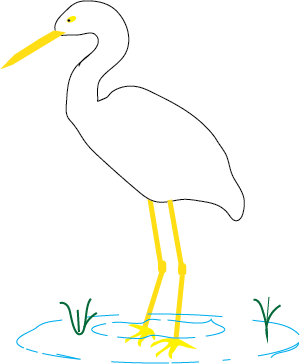
Early 20th Century Literature
This list of early 20th century literature contains classical books for kids with stories before 1950. These books have been in continuous print for over 50 years, or are noted to be newer.
 What changed in the early 20th century?
What changed in the early 20th century?
- Homes
- Transportation
- Communication
- Schools
- Movement from farm to cities
See more about using Early 20th Century at the bottom of this page.
National Velvet
By Enid Bagnold
Realistic FictionSussex England - rural
1920's
Reading Level: 5th - 8th Grade
A fourteen year old girl becomes the owner of a marvelous piebald horse and dreams of entering him into the National Championship. Her determination to overcome multiple obstacles reflects the champion-spirit her mother displayed a generation before. Many of the classical horse stories are from the late 1800s and early 1900s.
In The Shadow of the Pines
By Karen Newell
True StoryEast Texas - Rural- USA
1935
Reading Level - 4th grade and above
When the mother in a sharecropping family dies leaving six children, the oldest son promises to keep the family together and get the younger children to school. When every circumstance works against them, the children strive to help each other. A newer book, it is one of the titles in Depression Era literature.
Cheaper By The Dozen
By Frank B. Gilbreth, Jr and Ernestine Gilbreth Carey
True StoryNew Jersey - USA
1910 - 1920
Reading Level: 3rd to 6th Grade
We've all read about the famous inventors. Here's a true story of one family with 12 kids who undergo remarkable changes as their home and life is modernized. Look for other titles from the 20th century that are also humorous stories.
Earthquake At Dawn
By Kristiana Gregory
Historical Fiction - based on true story1906 Earthquake in San Francisco
6th - 8th grade
Daisy is the fictitious main character who travels as an assistant with the historical Edith Irwine, world renown photographer who took forbidden pictures of the city after the famous earthquake. A realistic glimpse into the hardships surrounding the people who survived the horrific earthquake.
After the Dancing Days
By Margaret Rostkowsky
Kansas: Post World War IGrade 5-9
Historical Fiction
Thirteen year old Anne's father has returned to home after serving as a military physician, but still there are plenty of severely wounded soldiers whom he needs to care for at the local hospital. Against her mother's advice, she befriends Andrew, one of the veterans. In addition to the cripling wounds of the men around her, Anne also needs to face the reality of her favorite uncle who did not return; particularly when she finds out how he died.
The Story Of My Life
By Helen Keller
AutobiographyUSA
1880-1968
Reading level: 5th grade and above
The inspiring story of a blind and deaf woman who communicated with the world; and the persevering teacher who taught her to do so.
The Cruise of the Snark
By Jack London
True StorySouth Pacific
1907
The story of a famous author and the boat he designed to sail around the world. The cruise around the world was never completed, but his pictures and stories have endured for over one hundred years. See other ocean stories early 20th century literature tales of traveling by sea.
Letters From Rifka
By Karen Hesse
Based on a true storyRussia to Ellis Island
1919
The story of immigrants who came to the United States through Ellis Island for a better life is an important part of early 20th century literature. While this award winning book is too new to technically be considered a classic, it is likely to earn that designation with time. Based on the story of the author's aunt, it describes the journey of Rifka, a Russian-Jewish immigrant seeking a new life in a new land.
Twenty and Ten
By Claire Huchet Bishop
True Story of a school in France1944
World War II often marks the ending period of early 20th century literature. Twenty and Ten tells the story of a boarding school that hides ten Jewish children from the Nazis. See other World War Two stories.
All The Cities Of Gold
By Karen Newell
True Story, Rural Kansas1948
Fourteen year old Donna traveled across the country with the desire to be reunited with her mother. But first she needs to be determine why her family was separated. Piece by piece her relatives help her untangle the story of her family's past. But her own future remains uncertain as she is left with the choice of bitterness or forgiveness.
 Children's stories from the early 20th century often document the momentous changes that individuals, families, communities, and society underwent. No longer did the hands of time move slowly. They moved with breath-taking speed.
Children's stories from the early 20th century often document the momentous changes that individuals, families, communities, and society underwent. No longer did the hands of time move slowly. They moved with breath-taking speed.Think about it.
Children born in covered wagons on the wild frontier flew across the country to meet their grandchildren who were born in hospitals only a few decades later.
The day to day life style went from old-fashioned to post-modern in one life-time, causing enormous change to families and communities. At the same time that individual lives were being altered, world conflicts changed the globe forever.
Stories in this era reflect much the same thing that all classical literature does: men and women and children of character rising to meet the challenges of their time with the goal of overcoming evil with good.
But sometimes it became harder to tell good from bad.
Things that were once taken for granted were challenged. And ideas that were once challenged were taken for granted.
As readers encounter the literature of the early 20th century, help them recognize that the universal search for good sometimes became complicated as social changes swirled around the characters.













